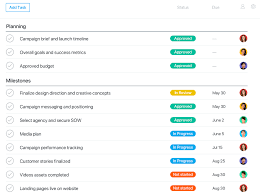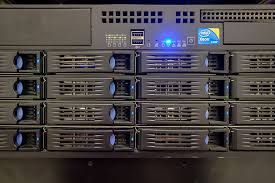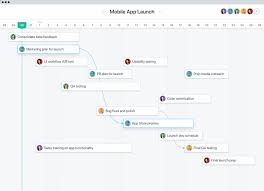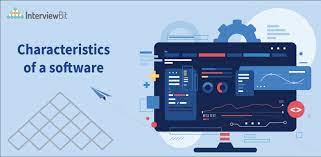Streamline System Management: Ansible RPM Download Guide
Exploring Ansible RPM Download
Ansible is a powerful automation tool that simplifies the process of configuring and managing systems. One common way to install Ansible on a Linux system is by downloading the RPM package.
RPM (Red Hat Package Manager) is a package management system used in various Linux distributions, including Red Hat Enterprise Linux (RHEL) and CentOS. When you download the Ansible RPM package, you are obtaining a pre-built binary package that can be easily installed on your system.
Steps to Download Ansible RPM:
- Visit the official Ansible website or a trusted repository to locate the RPM package for your specific Linux distribution.
- Click on the download link for the desired version of Ansible.
- Once the RPM file is downloaded, you can install it using the package manager specific to your distribution. For example, on CentOS or RHEL, you can use the ‘yum’ command:
yum install ansible.rpm
By following these simple steps, you can quickly set up Ansible on your system and start automating tasks efficiently. Remember to check for any dependencies required by Ansible and ensure they are installed before proceeding with the installation.
Benefits of Using Ansible:
- Simplicity: Ansible uses simple YAML syntax for defining tasks, making it easy to understand and use.
- Scalability: Ansible can manage configurations across multiple servers simultaneously, saving time and effort.
- Flexibility: With support for various modules and plugins, Ansible can automate a wide range of tasks in different environments.
- Community Support: The vibrant Ansible community provides resources, documentation, and support to help users get started with automation.
Whether you are a sysadmin looking to streamline system management or a developer automating deployment processes, downloading the Ansible RPM package is a convenient way to leverage this powerful automation tool on your Linux system.
Essential FAQs on Downloading and Managing Ansible RPM Packages in the UK
- 1. How do I download the Ansible RPM package?
- 2. Where can I find the official repository for Ansible RPM downloads?
- 3. What are the system requirements for installing Ansible via RPM?
- 4. Can I use YUM to install Ansible RPM on CentOS or RHEL?
- 5. Are there any dependencies that need to be installed before downloading Ansible RPM?
- 6. How do I verify the integrity of the downloaded Ansible RPM package?
- 7. Is it possible to upgrade an existing installation of Ansible using a new RPM package?
1. How do I download the Ansible RPM package?
To download the Ansible RPM package, start by visiting the official Ansible website or a trusted repository where the RPM package is available. Look for the specific version of Ansible you need and click on the download link provided. Once the RPM file is downloaded to your system, you can proceed to install it using your distribution’s package manager. For instance, on CentOS or Red Hat Enterprise Linux (RHEL), you can use the ‘yum’ command along with the path to the downloaded RPM file for installation. Following these steps will enable you to acquire and install the Ansible RPM package efficiently, allowing you to harness the automation capabilities of Ansible for your system management tasks.
2. Where can I find the official repository for Ansible RPM downloads?
When looking for the official repository for Ansible RPM downloads, users can easily access the trusted source by visiting the official Ansible website. The official Ansible repository provides users with the most up-to-date and secure versions of the RPM packages for various Linux distributions. By downloading Ansible from the official repository, users can ensure they are getting the authentic software package that is maintained and supported by the Ansible community. It is recommended to always refer to the official repository to obtain the latest releases and updates for Ansible RPM downloads.
3. What are the system requirements for installing Ansible via RPM?
When considering the system requirements for installing Ansible via RPM, it is important to ensure that your Linux distribution meets the necessary criteria to support the installation process. Typically, Ansible can be installed on a wide range of Linux distributions, including Red Hat Enterprise Linux (RHEL), CentOS, Fedora, and others. Ensure that your system has the required disk space, memory, and processing power to accommodate the installation of Ansible via RPM. Additionally, make sure that any dependencies or prerequisites specified by Ansible are met before proceeding with the installation to ensure a smooth and successful setup of this powerful automation tool on your system.
4. Can I use YUM to install Ansible RPM on CentOS or RHEL?
Yes, you can use YUM to install the Ansible RPM package on CentOS or RHEL. YUM (Yellowdog Updater Modified) is a command-line package management tool that simplifies the process of installing, updating, and removing software packages on RPM-based Linux distributions. By using the ‘yum install’ command followed by the path to the Ansible RPM file, you can easily install Ansible on your system. YUM will automatically handle dependencies and ensure that Ansible is installed correctly, making it a convenient method for setting up this powerful automation tool on CentOS or RHEL systems.
5. Are there any dependencies that need to be installed before downloading Ansible RPM?
Before downloading the Ansible RPM package, it is essential to be aware of any dependencies that may need to be installed on your system. Ansible relies on certain libraries and tools to function properly, so ensuring that these dependencies are met beforehand can prevent installation issues and ensure smooth operation. Common dependencies for Ansible may include Python, SSH, and various Python modules. It is recommended to check the official Ansible documentation or the repository from which you are downloading the RPM package to identify and install any required dependencies before proceeding with the installation. By addressing these dependencies proactively, users can avoid potential complications and seamlessly integrate Ansible into their system for efficient automation tasks.
6. How do I verify the integrity of the downloaded Ansible RPM package?
To verify the integrity of the downloaded Ansible RPM package, you can use cryptographic checksums to ensure that the file has not been tampered with during the download process. One common method is to compare the checksum of the downloaded RPM file with the official checksum provided by the Ansible website or repository. This verification process helps guarantee that the package has not been altered or corrupted, giving you confidence in the authenticity of the software before installation.
7. Is it possible to upgrade an existing installation of Ansible using a new RPM package?
Yes, it is possible to upgrade an existing installation of Ansible using a new RPM package. When a new version of Ansible is released, you can download the updated RPM package and use your package manager to upgrade the current installation. By following the appropriate commands for your Linux distribution, such as ‘yum update ansible.rpm’ for CentOS or Red Hat Enterprise Linux (RHEL), you can seamlessly update Ansible to the latest version while preserving your existing configurations and settings. Upgrading Ansible ensures that you have access to the latest features, enhancements, and bug fixes provided by the developers, allowing you to continue automating tasks efficiently with an up-to-date automation tool.










